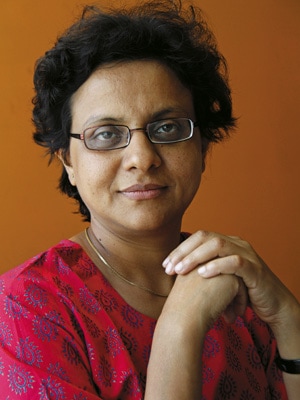
First 1,000 Days Critical For a Child's Nutrition Profile
Rohini Mukherjee of Naandi Foundation tells Sriram Balasubramanian that workers of Integrated Child Development Services are underqualified and overworked
ROHINI MUKHERJEE
Designation: Survey team leader of Hungama Report,Naandi Foundation; manages Global Partnerships, Institutional Learning & Education at Naandi
Education: Master’s degree in social work from Delhi University
Career: Joined Naandi in 2005 as manager, Global Partnerships; prior to that she worked in remote rural areas of Bengal, where she was also the founding member of a grassroots not-for-profi t advocacy group that took up democracy and governance issues on behalf of the rural underprivileged
Interests: Loves to drive, enjoys Indian classical music and reading fiction and history
Q. What are some of the systemic issues with regard to nutrition?
Firstly, there is a perception that this has to do only with the ICDS [Integrated Child Development Services]. Besides ICDS, there is [the need for] a lot of inter-governmental cooperation within various departments; this has to be strengthened. The ‘first 1,000 days’ [from the day a woman becomes pregnant to the time that child turns two] is the most critical period to build the nutrition profile of a child. Services for this segment are poor.
The workload of the individual workers, [who are] part of the ICDS, tends to be high and their skill sets tend to be low. This makes it harder for them to complete their task since they are not qualified and overworked. In addition, there is no meaningful collection and usage of data. Technology could be used effectively to reduce this deficit, but it is not being used.
Q. What can be done about the workload of individual workers? How can people help if they want to?
First, there has to be a fact finding exercise to know about their local Anganwadi centres who are responsible for monitoring/helping malnutrition cases in that locality. People should reach out to the people working at the centre so that they create an engagement or awareness. This would also provide the workers with moral support.
Q. Are the workers of ICDS paid enough? Isn’t moral support also important?
The workers are paid a very marginal sum of Rs. 3,500 per month. There are 12 lakh workers in the country. Most of them are not paid properly and moral support would do them a world of good, it would motivate them too. Time spent with them is more important than money.
Q. Did your survey (Hangama Report) come across any region or area that has effectively tackled malnutrition? What did they do right?
The survey selected six districts from the top of the Child Development Index, and, not surprisingly, these districts have very low rates of malnutrition. The analysis of reasons for low malnutrition is beyond the purview of the design of this survey.
Q. Have you come across shortages in protein foods in your survey areas?
We had one question in our survey asking what the child had eaten in the last 24 hours, and we clubbed the answers into food groups. The data shows proteins as not being very commonly given to children.
(This story appears in the 30 November, -0001 issue of Forbes India. To visit our Archives, click here.)





